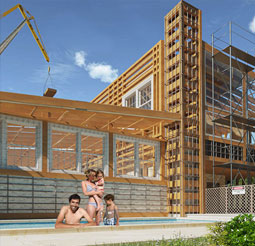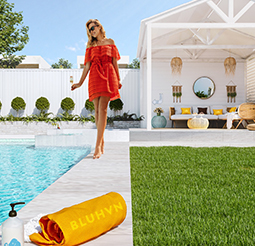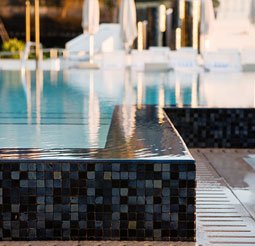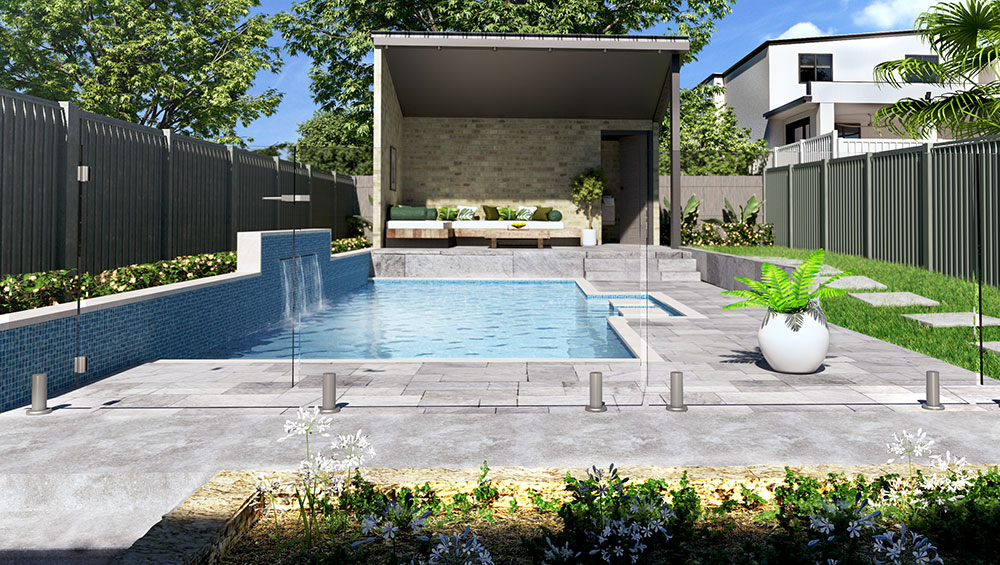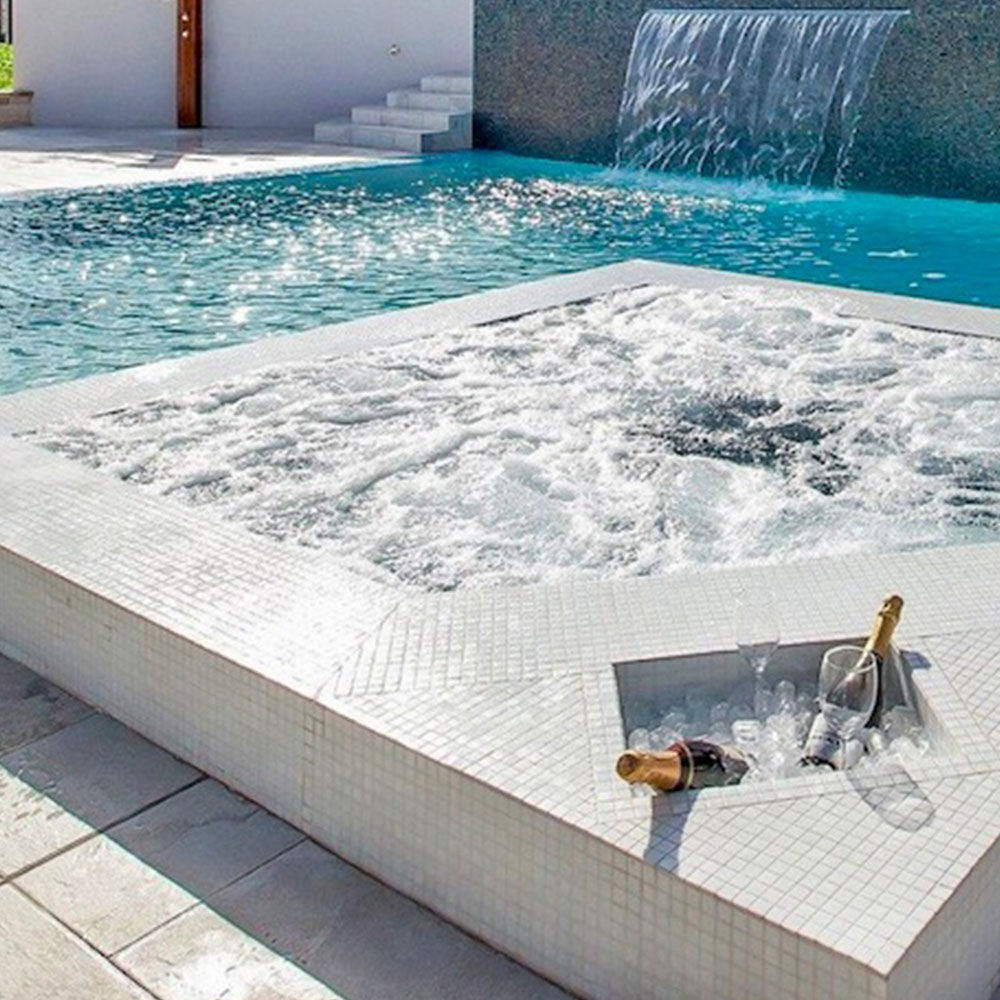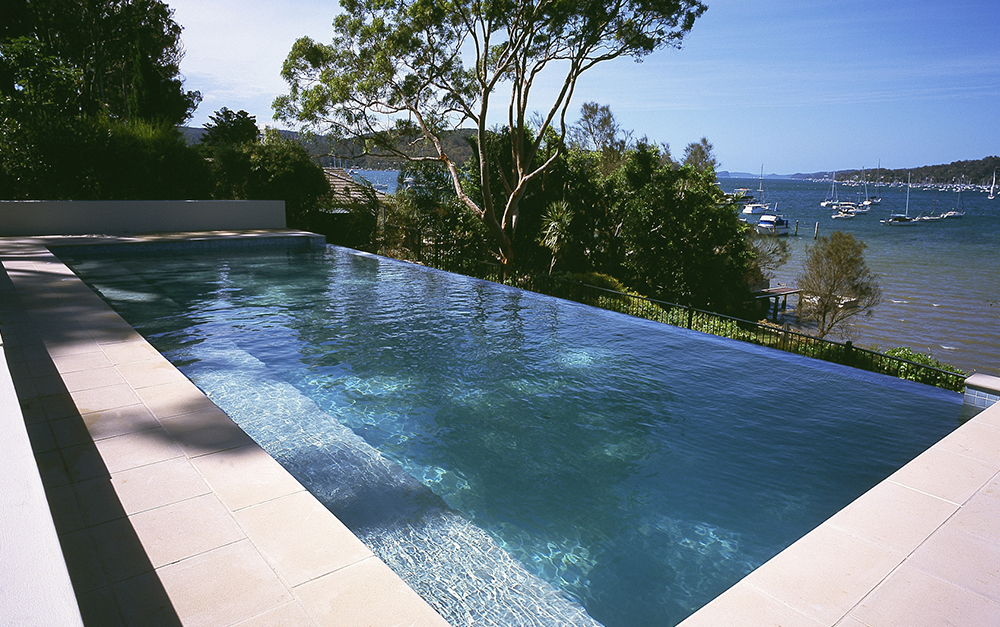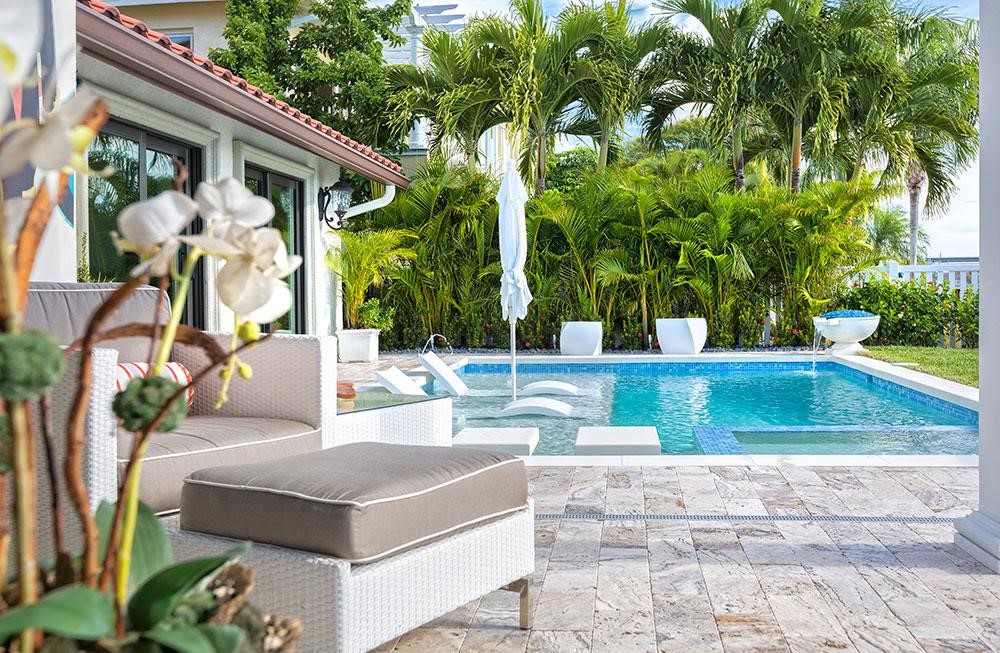Sustainable Pool Design: Eco-Friendly Features and Practices
November 4, 2024
Sustainability is a hot topic for many people throughout Australia. Whether you’ve got a strong sense of environmental responsibility and want to limit your impact, or you’d just like to save money by reducing waste, there are countless ways to make your pool more sustainable.
In this article, we’re going to explore a range of eco-friendly swimming pool features and practices. From energy-efficient pool pumps to harvesting rainwater, let’s jump into the best ways to make your pool more sustainable.
Sustainable materials for pool construction
If you want to build an eco-friendly pool, the materials you choose can make a huge difference. One way to reduce your pool’s environmental impact is by using sustainable, long-lasting materials that look great but also help cut down on carbon emissions. For example, recycled concrete and glass are fantastic for the structure, and sustainable timber is perfect for decking and landscaping. Plus, recycled and natural materials are ultra-durable, which means you’ll have less ongoing maintenance costs.
Choosing recycled or natural materials isn’t just good for your local environment, because sustainable materials are typically sourced in a more responsible way. For example, FSC-certified timber is grown, harvested and transported in ways that reduce the harm caused to the environment.
Energy-efficient pool pumps and filters
When it comes to reducing your pool’s environmental footprint, one of the best places to start is cutting down the amount of energy it uses. For existing pools, owners might consider upgrading to more energy-efficient pool pumps and filters. Older types of pool pumps and filters run constantly, and often chew up plenty of electricity. Modern, variable-speed pumps are a much more energy-efficient choice, as they operate more according to your pool’s needs.
These variable-speed pumps can use up to 80% less energy than their outdated single-speed predecessors. So, if you want to reduce your carbon footprint and save money on power bills at the same time, invest in quality, energy-efficient pool pumps and filters.
LED lighting for energy savings
If you’re installing lights around your pool, opting for LED technology can deliver both short and long-term savings. LED lights can use up to 85% less energy than traditional light bulbs. Even better, they last far longer, meaning fewer replacements and maintenance. It’s another double-win for pool owners who want to save money and reduce their environmental impact.
Plus, you don’t have to sacrifice any style or functionality. LED lights now come in a range of colours and features to enhance your pool area. When lighting your pool, don’t forget about the surrounding areas such as pathways, and ensure you can move around safely if you take an evening dip.
Pool covers to save water
One of the biggest causes of water loss in swimming pools is evaporation, especially considering Australia’s warm climate. As water evaporates in an uncovered pool, it simply disappears into the atmosphere. However, with a pool cover, water still evaporates, but the vapour turns to condensation (water) under the cover, dripping straight back into the pool.
In the long run, this means less frequent refills, keeping your water consumption down even in the hottest summer. Pool covers also have other benefits, such as maintaining water temperature which cuts down on the need for heating systems. They also stop debris from falling into the pool, which takes the pressure off your pumps and filters. It also means less frequent cleaning, potentially reducing the amount of chemicals you use.
Overall, pool covers substantially reduce your pool’s environmental impact, while saving you money at the same time.
Harvesting rainwater for pool refills
If you’re using town water (or tank water) for swimming pool refills, it’s no doubt costing you a lot of money. It’s also wasting a lot of water, which is a major issue for the environment. To reduce this impact, you could consider harvesting rainwater to refill your pool. The other benefit is that you’ll still be able to refill your pool happily if there are water restrictions.
You’ll no doubt need to explore different ways to harvest rainwater, from DIY solutions to expert water recycling systems. Either way, it’s great for the environment, and rainwater is completely natural, so it won’t damage your pool at all. Save money and help the environment at the same time!
Automated pool maintenance systems
Nobody really enjoys pool cleaning because it’s usually a long and tiresome task to do by hand. Even using older pool cleaning equipment uses far more energy than the modern systems available today. Today, modern pool maintenance systems are largely automated and a lot smarter. This means they can help to keep your pool clean with very little human intervention.
For example, high-quality filters can reduce the need for excessive cleaning and chemicals. Robotic pool cleaners operate independently rather than relying on power from the filtration system like old suction cleaners. The result is a more thorough, clean, and lower energy consumption, which is always good for the environment. In addition, automated systems help to keep your water levels balanced, so there is less chemical usage and waste.
Natural and mineral pools
Arguably the best way to make your pool more sustainable is to opt for natural or mineral pools. These have so many environmental benefits, and your wallet will thank you too. Firstly, mineral pools don’t use harsh chemicals, which helps the environment and also reduces skin irritation and sore eyes from swimming in chlorine. The Enviro Smart mineral pool from Blue Haven also drastically reduces your water consumption each year – another big win for planet Earth.
Natural pools are also a great option. They use biological filtration systems such as gravel beds and natural plants to make it feel like you’re swimming in a lake. Typically, natural pools use the existing landscape in their structure, so there is even less physical impact on the local environment.
Drought-resistant landscaping
We already discussed the use of plants in and around natural swimming pools. However, you can also use drought-resistant native plants in your pool landscaping. This means you can keep your outdoor spaces looking beautiful without the excessive water consumption of an irrigation system.
Australian natives like kangaroo paw, bottlebrush, and coastal rosemary are perfect because they thrive in dry conditions and require very little upkeep. Native plants also attract local wildlife, making your gardens more biodiverse. They also usually have deep root systems, which help to prevent soil erosion, but you do need to be careful that roots won’t compromise your pool’s structure or surrounding plumbing.
Energy-efficient pool heaters
If you’ve got a heated pool, you probably already know how much energy it takes to keep them at the desired temperature. This means higher energy bills and more strain on the environment. Fortunately, you can now buy energy-efficient pool heating systems that use heat from the surrounding air to warm your water. This cuts energy consumption considerably, but there’s an even better option.
Solar pool heating systems use free energy from the sun to keep your pool at a nice temperature all year round. There’s obviously an upfront cost involved, but once you install a solar heating system there are basically no ongoing costs. With solar, you can slash your energy bills and
Read More:
- Overcoming Challenges: Installing Pools on Sloping Ground
- The Importance of Quality Plumbing in Pool Construction

